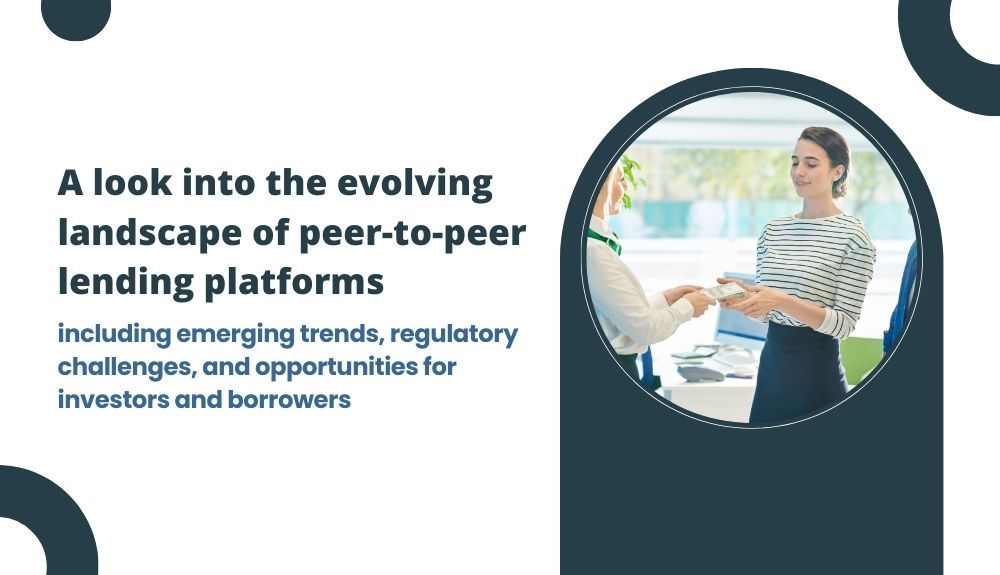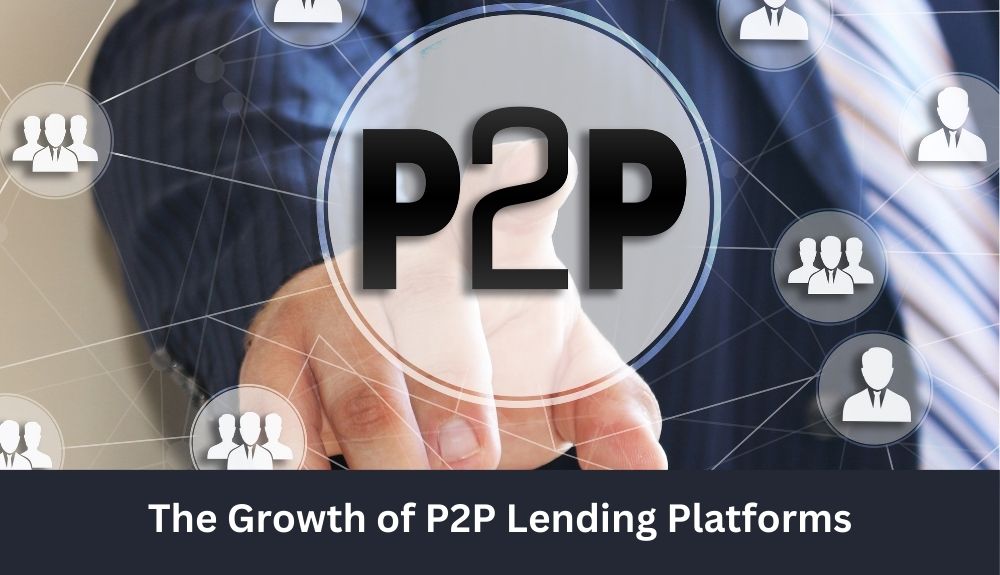
By max March 27, 2024
Welcome to the world of Peer-to-Peer (P2P) lending, where traditional borrowing and investing are getting a digital makeover! Imagine a platform where borrowers connect directly with individual investors, cutting out the middleman. Curious to learn more about this evolving landscape? Let’s dive in and explore the ins and outs of P2P lending platforms, from how they work to the latest trends shaping the industry.
How it Works: The Borrowing and Lending Process
Peer-to-peer lending platforms have revolutionized the way individuals borrow and lend money. The process is simple yet effective: borrowers create a listing detailing their loan needs, including the amount required and interest rate they are willing to pay. On the other hand, lenders browse through these listings and choose which ones to fund based on risk assessment and potential returns.
Once a borrower’s listing is funded, they receive the loan amount deposited into their account directly from individual lenders participating in the platform. Borrowers then make regular repayments that include both principal and interest over an agreed-upon period. These repayments are distributed back to lenders according to their investment in the loan.
This direct interaction between borrowers and lenders eliminates traditional financial institutions as intermediaries, providing more personalized borrowing options for individuals while offering attractive returns for investors participating in peer-to-peer lending platforms.
The Growth of P2P Lending Platforms

Peer-to-peer lending platforms have experienced exponential growth in recent years, revolutionizing the way individuals borrow and invest money. These online marketplaces connect borrowers directly with investors, eliminating the need for traditional financial institutions. The ease of access to funds and competitive interest rates offered by P2P platforms have attracted a diverse range of users seeking alternative financing options.
The global P2P lending market has expanded rapidly, catering to various funding needs such as personal loans, small business financing, real estate investments, and more. As technology advances and consumer trust in online transactions grows, these platforms continue to gain popularity among both borrowers and investors alike. With lower overhead costs compared to banks, P2P lenders can offer attractive returns to investors while providing affordable loan options to borrowers.
As the industry evolves, we can expect further innovation in risk assessment tools, borrower verification processes, and investment diversification strategies on P2P lending platforms. Investors looking for higher returns than traditional savings accounts or stock markets may find opportunities in this dynamic sector. Borrowers seeking quick funding solutions outside of conventional banking channels also stand to benefit from the evolving landscape of peer-to-peer lending.
Emerging Trends in P2P Lending
Peer-to-peer lending has witnessed a surge in popularity over the years, with emerging trends shaping the landscape of this alternative form of financing. One notable trend is the rise of niche P2P platforms catering to specific industries or borrower profiles. These specialized platforms offer tailored solutions and opportunities for investors looking to diversify their portfolios.
Another trend gaining momentum is the integration of artificial intelligence and machine learning algorithms in underwriting processes. By leveraging data analytics, P2P platforms can enhance risk assessment capabilities and streamline loan approvals, ultimately benefiting both lenders and borrowers.
Moreover, peer-to-peer lending is increasingly going global, with cross-border platforms connecting investors and borrowers from different regions around the world. This trend opens up new avenues for international investment opportunities while also presenting challenges related to regulatory compliance and currency exchange considerations.
As technology continues to evolve, we can expect further innovations in P2P lending, such as blockchain-based lending platforms offering increased transparency and security. These emerging trends highlight the dynamic nature of peer-to-peer lending and its potential to reshape traditional financial markets in the future.
Regulatory Challenges and Changes
The regulatory landscape surrounding peer-to-peer lending platforms is constantly evolving, presenting both challenges and opportunities for industry players. As these platforms gain traction, regulators are keen on ensuring consumer protection, risk management, and overall market stability.
However, navigating the complex web of regulations can be a daunting task for P2P lending companies looking to scale their operations while complying with stringent guidelines. Compliance costs can also impact platform profitability and hinder innovation in the sector.
Recent changes in regulations have aimed to strike a balance between fostering fintech growth and safeguarding investor interests. Increased transparency requirements, stricter eligibility criteria for borrowers, and enhanced disclosure standards are among the key changes shaping the P2P lending space.
Adapting to these regulatory changes will be crucial for P2P lending platforms to build trust among investors and borrowers alike while ensuring long-term sustainability in an increasingly regulated environment.
Opportunities for Investors and Borrowers

For investors, peer-to-peer lending offers a unique opportunity to diversify their portfolios beyond traditional investments like stocks and bonds. By participating in P2P lending platforms, investors can potentially earn higher returns compared to other investment options.
On the other hand, for borrowers, P2P lending provides an alternative source of funding that may be more accessible than traditional bank loans. Borrowers who may not qualify for a loan from a bank due to credit history or lack of collateral could find opportunities through P2P lending platforms.
Both investors and borrowers benefit from the streamlined process of connecting directly on these platforms without the need for intermediaries like banks. This direct interaction can lead to lower fees for borrowers and potentially higher returns for investors.
Peer-to-peer lending presents exciting opportunities for both sides of the equation to meet their financial goals in a mutually beneficial way.
Conclusion: Is P2P Lending a Viable Option?
Peer-to-peer lending has undeniably shaken up the traditional lending landscape, offering both investors and borrowers a unique opportunity to benefit from a more streamlined and efficient financial process. With its growing popularity and the emergence of new trends in P2P lending platforms, there is no doubt that this industry will continue to evolve.
For investors, P2P lending presents an attractive alternative investment option with potentially higher returns compared to conventional investments. Through diversifying their portfolios across various borrower profiles, investors can spread their risk while earning passive income.
On the borrower side, P2P lending provides individuals and small businesses access to funds that may not be available through traditional financial institutions. The convenience, speed, and flexibility offered by these platforms make them an appealing choice for those seeking funding without the bureaucracy associated with banks.
However, it’s crucial for both investors and borrowers to be aware of regulatory challenges that may impact the stability and growth of P2P lending platforms. As regulations adapt to this evolving industry, it’s important for stakeholders to stay informed and compliant with any changes that may arise.
In conclusion: While peer-to-peer lending offers exciting opportunities for both investors and borrowers alike, it’s essential to approach these platforms with caution. Conduct thorough research, diversify your investments or loan requests carefully, and stay abreast of regulatory updates to make the most out of this innovative financial model. By doing so, you can harness the benefits of P2P lending while mitigating potential risks along the way.
